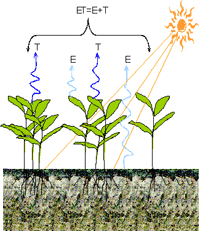Agricultural Research Division of IANR

West Central Research and Extension Center, North Platte
Date of this Version
2014
Citation
J. Anim. Sci. 2014.92:3116–3126 doi:10.2527/jas2013-7410
Abstract
Reproductive performance was evaluated in beef heifers born over a 2-yr period to determine the effects of target breeding weight (TBW) and development system (SYS) on growth and subsequent reproductive efficiency. Spring-born Angus heifers (253 ± 0.7 kg) were randomly allocated over 2 consecutive yr (yr 1, n = 80; yr 2, n = 96) to be developed to either 55% (350 kg) of mature BW (moderate gain, MG) or 62% (395 kg) of mature BW (high gain, HG). Each MG and HG group was further assigned to 1 of 2 replicated systems: (1) bale graze bromegrass-alfalfa round bales in field paddocks (BG) or (2) fed bromegrass-alfalfa round bales in drylot pens (DL). Heifers were fed a diet of bromegrassalfalfa hay (56.9% TDN; 9.8% CP) and barley grain supplement (85.1% TDN; 12.3% CP). After the 202-d development period, heifers were exposed to bulls for a 63-d breeding season. Target BW × SYS interactions were not detected for any measured parameters. During the winter development period, MG heifers had lower (P = 0.01) ADG than HG heifers and MG heifers had lighter (P = 0.01) BW at breeding. The proportion of heifers attaining puberty by 14.5 mo of age was less (P = 0.05) in MG (20 ± 4%) than HG heifers (52 ± 3%). From the end of the 202-d development period to pregnancy diagnosis, ADG was greater (P = 0.04) in MG heifers than HG heifers (0.83 vs. 0.71 kg/d). First-calf pregnancy rates were 86 and 88% for MG and HG heifers, respectively (P = 0.41). Second- and third-calf pregnancy rates of cows, developed in either a MG or HG system as heifers, were not different (P = 0.74; 94.7 vs. 95.9% and 93.8 vs. 93.9%, respectively). Economic analysis revealed a $58 reduced development cost for heifers developed to 55% compared with 62% of mature BW without a loss in reproductive performance.


Comments
Used by permission